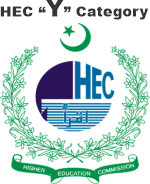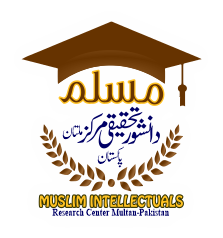SELF-ESTEEM AND EMOTIONAL INTELLIGENCE AMONG PAKISTANI UNIVERSITY STUDENTS
Keywords:
Self-Esteem, Emotional Intelligence, University Students, Faisalabad District, Punjab ProvinceAbstract
The aim of present study was to explore the association between self-esteem and emotional intelligence among university students.
The study utilized a correlational research approach to explore the relationship between self-esteem and emotional intelligence. Study was conducted in three universities (RIU, UAF & GCUF) of Faisalabad district of Punjab province, Pakistan over 3 months from October 2023 to December 2023. The study utilized convenient sampling, encompassing students across academic levels ranging from bachelors to masters. To assess self-esteem, the Rosenberg Self-Esteem Scale (1965) was administered, while emotional intelligence was measured using the Wong and Law Emotional Intelligence Scale (2002). A Pearson correlation coefficient was computed to examine the relationship between emotional intelligence and self-esteem. Additionally, an independent t-test was conducted to assess gender differences in emotional intelligence and self-esteem. The results revealed a positive correlation between the variables. Research groups were provided with self-administered questionnaires, which participants completed voluntarily. Subsequently, the collected data underwent entry into SPSS for analysis. An independent t-test was employed to assess the relationship between students' self-esteem and emotional intelligence. A descriptive analysis and a detailed examination of inferential statistics, such as correlation, linear regression, and t-test analysis were used which were all significant levels.
Downloads
References
Hamzah, S. R. A., Kai Le, K., & Musa, S. N. S. (2021). The mediating role of career decision self-efficacy on the relationship of career emotional intelligence and self-esteem with career adaptability among university students. International Journal of Adolescence and Youth, 26(1), 83-93.
Karaoglan Yilmaz, F. G., Yilmaz, R., & Erdogdu, F. (2023). The relationship between nomophobia, emotional intelligence, interpersonal problem-solving, perceived stress, and self-esteem among undergraduate students. Journal of Technology in Behavioral Science, 8(1), 27-35.
Khassawneh, O., Mohammad, T., Ben-Abdallah, R., & Alabidi, S. (2022). The relationship between emotional intelligence and educators’ performance in higher education sector. Behavioral Sciences, 12(12), 511.
Naufal, M. A., & Pathak, V. N.(2022). Stress, emotional intelligence and self-esteem among college students during 2nd wave COVID-19. International Journal of Health Sciences, (III), 5050-5058.
Onwubiko, E. C. (2022). . A study on the Relationship between Self-esteem and Emotional Intelligence among librarians in Nigerian universities: A survey. Library Philosophy and Practice, 1-30.
Oyovwe-Tinuoye, G. O. (2020). Self-esteem and job satisfaction among librarians in university libraries in Southern Nigeria. Library and Information Perspectives and Research, 2(2), 1-12.
Rahimi, M. (2016). The relationship between emotional intelligence, self-esteem, gender and educational success. Management Science Letters, 6(7), 481-486.
Rosenberg, M. (1965). Rosenberg self-esteem scale (RSE). Acceptance and commitment therapy. Measures package, 61(52), 18.
Shah, N. H., Nazir, N., & Zamir, S. (2019). Comparing emotional intelligence and self-esteem in secondary school students of Punjab. UMT Education Review, 2(1), 63-80.
Srikumaran, S., Arunodhaya, J., Sruthi, R. N., Nishanthi, R., & Atchaya, I. (2022). Relationship Between Emotional Intelligence and Self Esteem Among College Students. Journal of Positive School Psychology, 6(3), 6848-6856.
Tessaro, F., & Lampert, C. D. T. (2019). Desenvolvimento da inteligência emocional na escola: relato de experiência. Psicologia Escolar e Educacional, 23, e178696.
Wong, C. S., & Law, K. S. (2002). Wong and law emotional intelligence scale. The leadership quarterly.

Downloads
Published
Issue
Section
License
Copyright (c) 2024 PAKISTAN ISLAMICUS (An International Journal of Islamic & Social Sciences)

This work is licensed under a Creative Commons Attribution 4.0 International License.
This work is licensed under a Creative Commons Attribution 4.0 International License.
































